3 Elements of Deeper Project-Based Learning
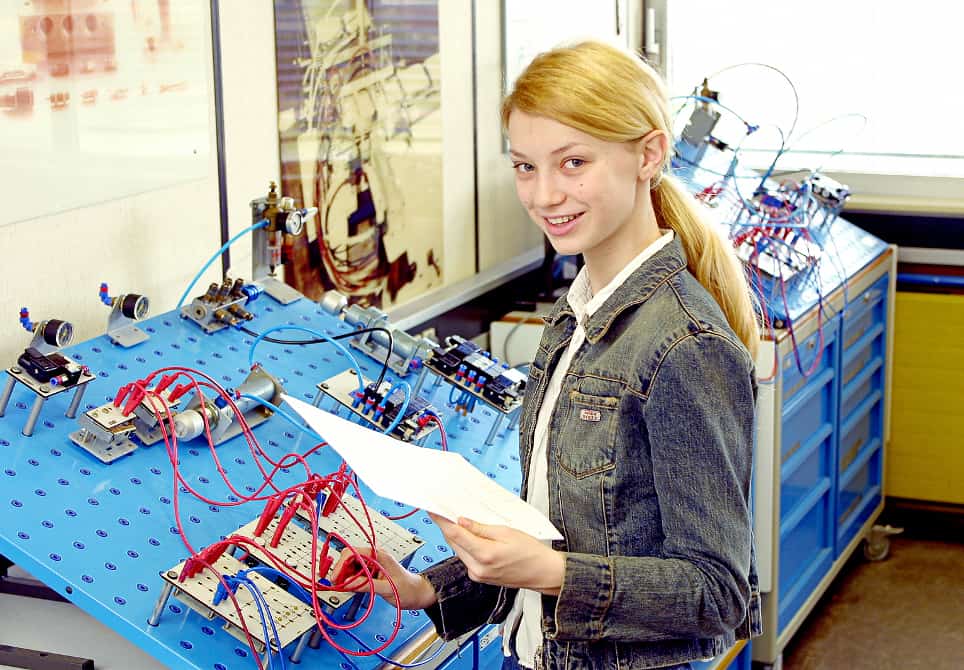
By Loretta Goodwin, American Youth Policy Forum
“We had to move lots around to accommodate the X-Box and the TVs,” a student at Arlington Career Center enthusiastically declared on a recent study tour led by the American Youth Policy Forum.
The young man’s investment in his education was clear. The project we viewed was in the Collision Repair shop–the transformation of a BMW Sport Coupe from a skeletal rescued frame to a sleek, functional machine.
What was driving that deep learning, characterized by a strong academic core, as well as skill development such as problem solving and effective communication? Conversations with students, teachers and administrators surfaced at least three key factors: passion, collaboration and community.
Passion
Students and teachers alike were passionate about the projects they were working on.
“We’re about how to get ideas out and into the whole world!” the Fabrication Lab instructor declared as he demonstrated 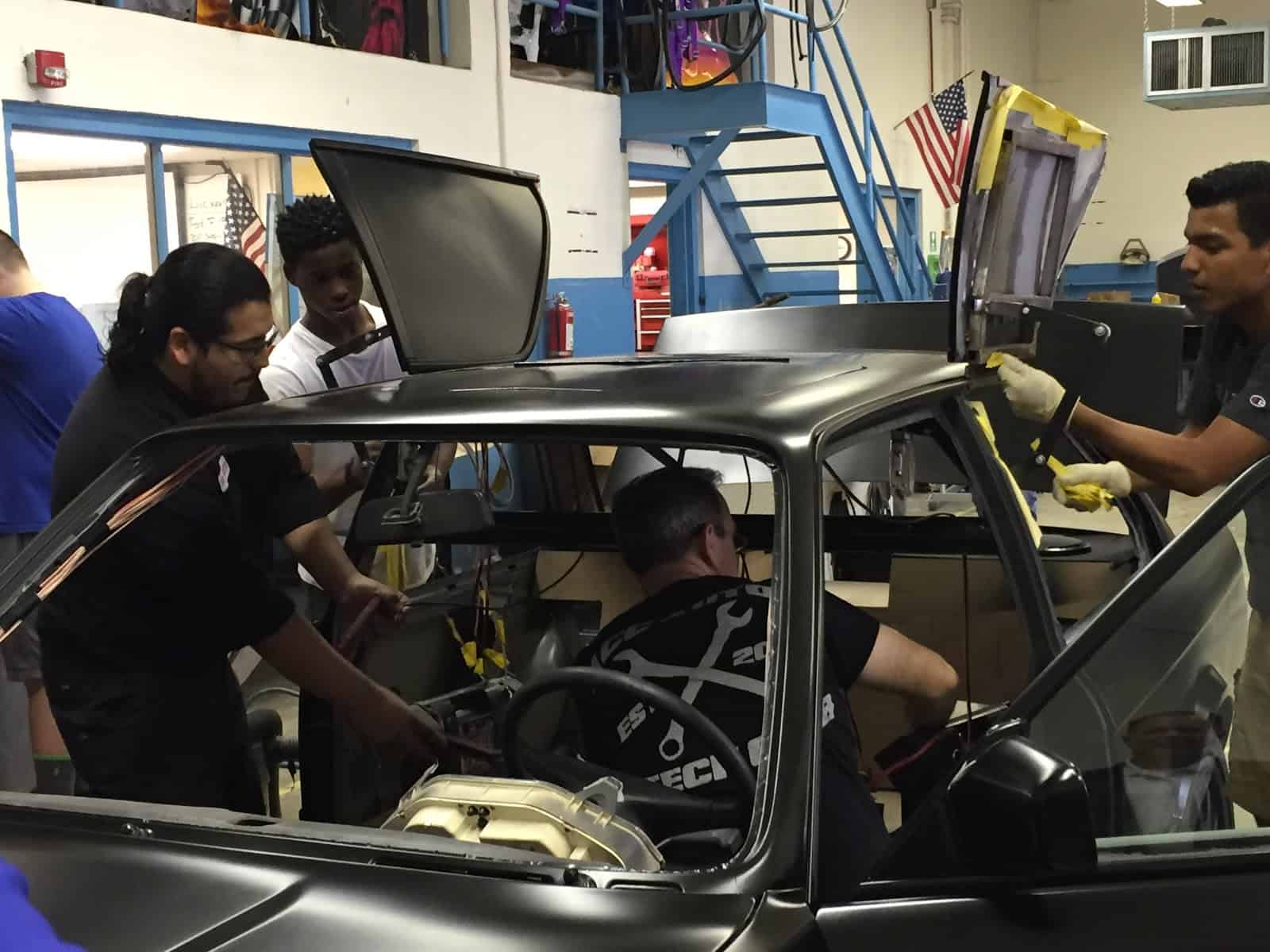 the equipment students are using to help build their dream machine.
the equipment students are using to help build their dream machine.
Regarding the Coupe, he explained that “the drive line wouldn’t run because there were so many miles on it, but the students wanted to see it come to life.”
That passion to rebuild the car drove many months of hard work, and was fueled by student ability to include features they were eager to see, including five TVs, a stereo system and an X-Box! Touch screen controls open the sunroof and raise the rear windows up and away from the car like wings. Students got to customize the steering wheel. Throughout the project their voices and choices were sought and encouraged.
Collaboration
Yet passion and a mere desire to resuscitate the car were not sufficient to make it run–students and teachers had to collaborate to create the transformation, and learn a great deal of knowledge and skills in the process.
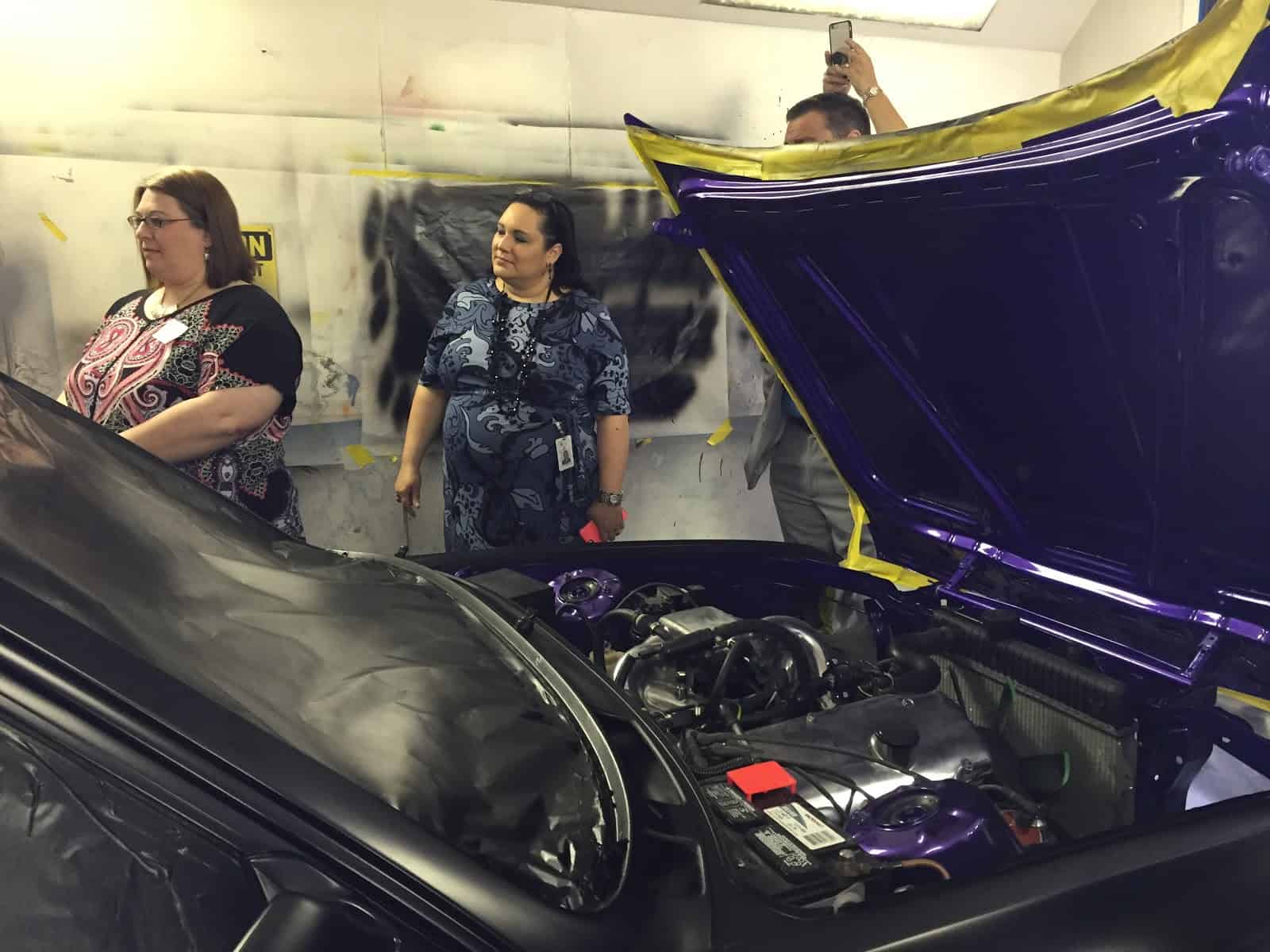 As many of the necessary parts to fix the car could not be bought, students had to print them instead, including parts of the engine. That entailed precision, which meant close collaboration with the math teacher to ensure that measurements were accurate and that parts would fit seamlessly together.
As many of the necessary parts to fix the car could not be bought, students had to print them instead, including parts of the engine. That entailed precision, which meant close collaboration with the math teacher to ensure that measurements were accurate and that parts would fit seamlessly together.
It also meant close cooperation with the Fab Lab instructor, who assisted students in printing the necessary parts. The collision repair instructor noted that mostly first year students worked on this project, and they had to learn about a variety of tools and which were necessary for which jobs. They had to master where all the different wires in the engine had to go.
These experiences were all leading to earning an Automotive Service Excellence (ASE) Certificate for Auto Body Technicians that could be attained at the end of their second year. This certification is highly-regarded by area employers and is widely recognized, setting students up to earn increased pay.
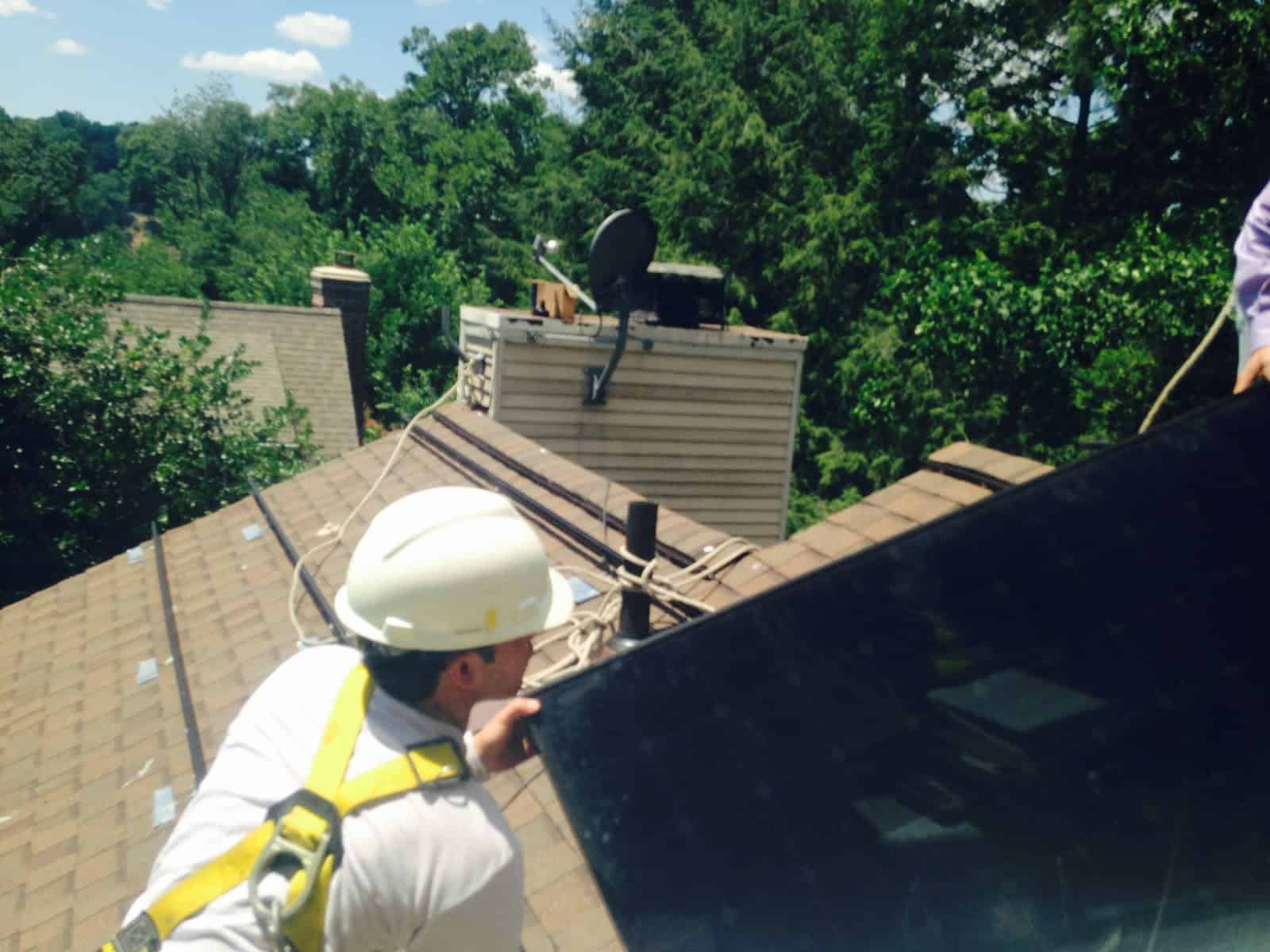
Community
But it’s this third element–the close involvement of area employers in providing students with work-based experience–that is critical to student skill development and increased earning potential.
For two weeks, eight car dealerships spend time at the Center, interviewing students for summer internships. These are paid opportunities where students work at the dealership learning everything from how the sales floors operate to working on car repair. They gain valuable hands-on experience, such as how to handle themselves professionally, in environments where many dealerships are developing their skills with a view to permanent employment. They also gain greater insight into the variety of career paths they could potentially follow (e.g., collision repair technician, glass installer, insurance adjuster).
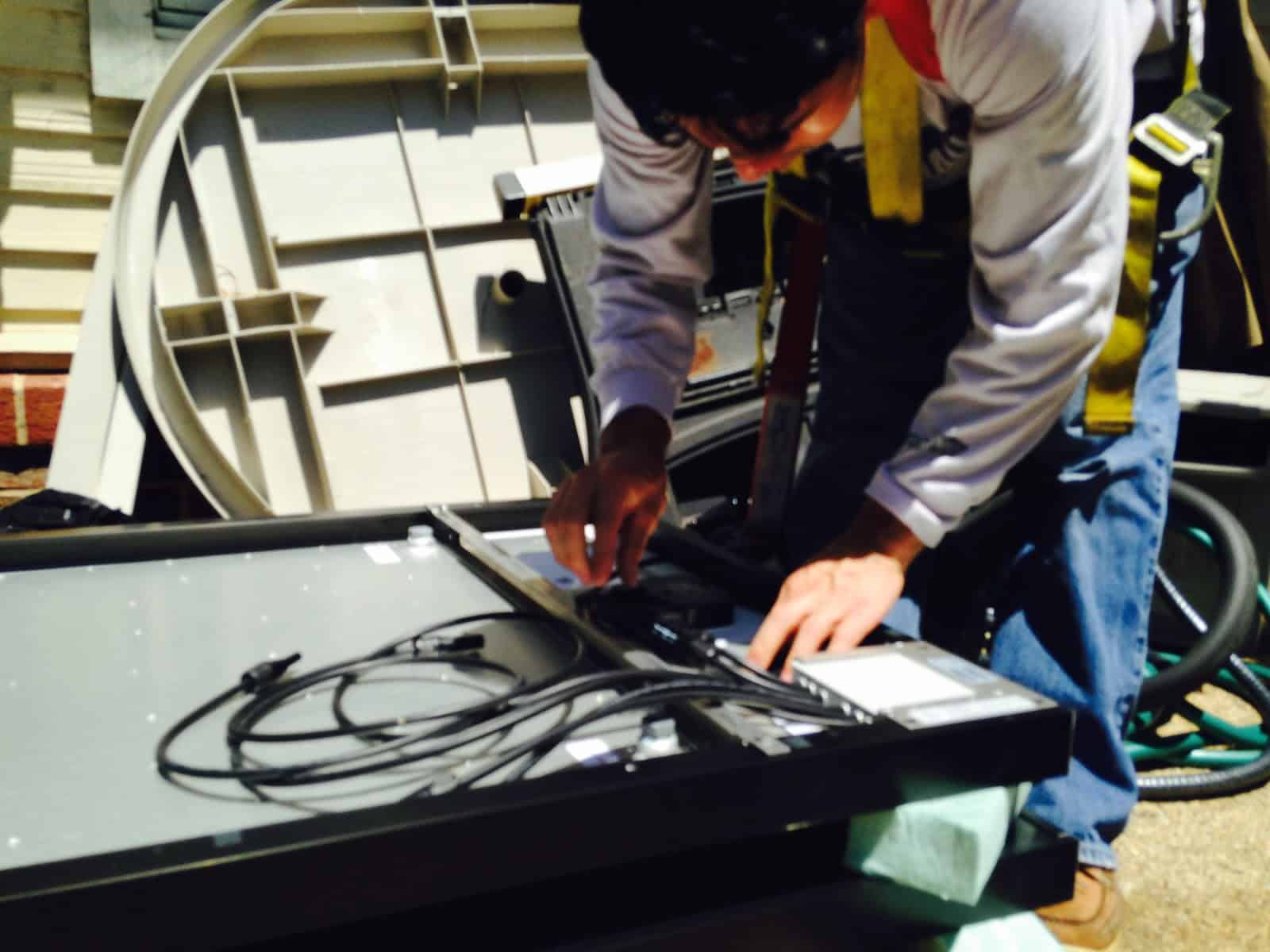 The customized car was but one example among many we saw or heard about at the Center showcasing that crucial intersection of passion, collaboration and community as students work on projects and gain knowledge and skills. Two students in the Emergency Medical Technician program explained how they are exploring medical fields and gaining experience through ambulance ride-alongs and hospital visits.
The customized car was but one example among many we saw or heard about at the Center showcasing that crucial intersection of passion, collaboration and community as students work on projects and gain knowledge and skills. Two students in the Emergency Medical Technician program explained how they are exploring medical fields and gaining experience through ambulance ride-alongs and hospital visits.
One student declared, “When I went to the hospital, a new field opened to me. I flooded them with questions.” The hands-on learning at the hospital provided challenges the students were eager to share: knowing the steps in dealing with trauma, remaining calm, and thinking under pressure.
Electricity and Sustainable Technology students have had opportunities, through community involvement, to install a photovoltaic/geothermal heat pump system at a local residence. One of these students is also building a solar-powered pagoda that will be available to the local community to sit under while charging electronic devices.
As students engage in this learning, many of the courses are providing them with dual credit through a partnership with Northern Virginia Community College. They are thus graduating from the Center with college credit, hands-on experience and a much clearer idea of how to harness their passions in service of their future learning and growth.
What Can You Do?
If you are an employer, consider offering internships and work-based learning opportunities for students so they can learn real world skills. To learn more, check out Can Employer Investment Narrow the “Soft Skills” Gap?“and Southern Regional Education Board – College and Career Readiness.
If you are a teacher, consider teaming with other teachers to create interdisciplinary project-based curriculum. Check out great examples at Projects at High Tech High and Buck Institute for Education.
If you are an education policymaker, consider supporting career pathways that allow students to learn and apply academic and workforce skills. For example, see the Los Angeles Chamber of Commerce: UniteLA and the National Skills Coalition; ConnectEd and the College and Career Readiness and Success Center at Integrating Employability Skills; and the Pathways to Prosperity Network at Jobs For the Future
This blog is part of “It’s a Project-Based World” series. To learn more and contribute a guest post for the series, see the Project-Based World page. Join in the conversation at #projectbased.
For more blogs in the series, see:
- Embracing Failure as a Necessary Part of Deeper Learning
- What’s Next? Personalized, Project-Based Learning
- Building Better Teams for Project-Based Work
Loretta Goodwin is a Senior Director at the American Youth Policy Forum. Follow them on Twitter: @AYPF_Tweets.
Stay in-the-know with all things EdTech and innovations in learning by signing up to receive the weekly Smart Update. This post includes mentions of a Getting Smart partner. For a full list of partners, affiliate organizations and all other disclosures please see our Partner page.




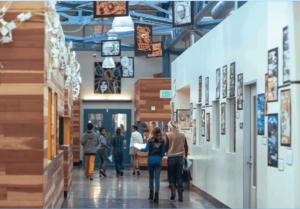
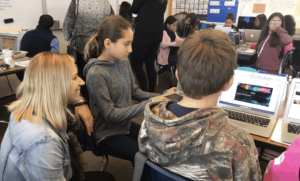
jumbooffense
Thats interesting...
Paula Cruickshank
What a fascinating article! It makes a strong case for incorporating hands-on, project-based course offerings for all students. Traditional education is too test-driven. Students need to learn how to analyze and think independently, but at the same time work together in school and the workforce. And this approach - particularly working in partnership with local businesses and earning college credits and certifications in the process - really gives our young people a huge advantage in life after high school.